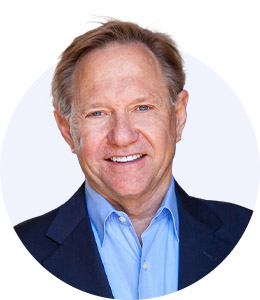We know when we feel we belong somewhere. For years I have shared that most people appreciate a work environment where they believe the work they are doing fills a purpose, is worthwhile, and makes a difference. Today, I feel it takes much more than that. A person can feel all of those things and still may not feel that they belong. Belonging is that deep-down sense that “this is the right place for me.” People can feel they are doing worthwhile work, feel that sense of purpose, feel they’re making a difference, yet still leave because they know they can find those things elsewhere. The key to retention is belonging. Is this the right place for me?
Belonging is also the key to engagement. The definition I often hear to describe employee engagement is that an engaged employee expends discretionary effort. They are committed to the organization’s overall goals. I feel belonging fits that definition with an exclamation point. Belonging means we are a part of something, and it is an incredibly powerful force. We all know there are organizations, schools, teams, communities, and so forth that create fierce loyalty.
At a session with healthcare leaders, I was asked, “How do you know when people feel proud of where they work?” The answer is that you can tell when they refer others to work there, send people there to receive care, and act as if they own the organization. I brought up a situation that exemplifies what happens when people don’t have this sense of pride. When speaking with a group of caregivers, they told me that at one time they would take off anything that identified where they worked once they left for the day—any clothes with the hospital’s logo, any name badges, etc. They felt where they worked did not have a good reputation and worried that people would say something to them about it. Fortunately, they added that they no longer feel this way.
When I was president of a hospital, we had a sign over the employee entry that read: “Through these doors walk the world’s greatest healthcare workers.” We gave out shirts with the logo on the front and a message on the back. The message was “I am part of the greatest healthcare team in the world.” One day I was shopping in a local store, and there about 20 feet ahead of me was a staff member wearing the shirt on a day they did not work. I thought, How cool is that?
Such a sense of belonging does not just happen. Many times, we may feel like we don’t belong because we compare our insides to someone else’s outside. We don’t realize that we are very much the same. At work, we tend to hang with those we know best. In workshops, we sit with our friends. Yet, when we take time to get to know others, we find connections with them. It’s the three Cs: Connections create communication, which leads to that sense of community.
Today there is an approach to care called precision medicine. In summary, it means providing a treatment plan based on the individual. Yes, many treatment plans can be similar, but they will vary depending on the person. Marcia Horn, president and CEO of ICAN, a not-for-profit organization that assists people with cancer, lets each person know they are an individual. No two people are alike. She calls the approach N=1, meaning that in statistical terms, everyone is an N of 1. I love that. I believe we can transfer this mindset by creating conditions that make a person feel they belong.
Organizations can create a great sense of belonging even for people who aren’t affiliated with them. I was staying in a hotel that happened to have in it many fans of a college football team that was playing for the national championship. I left early the day of the game, which was a night game. As I was waiting for a taxi to go to the airport, fans were already in the lobby for bus rides to the stadium. This was 12 hours prior to game time. I happened to be standing by four fans dressed in the team’s colors. I asked them if they went to the school. They said no, they just loved the team. They felt like they were part of the team.
Here are some ways to use the N=1 philosophy to better understand what helps each person feel they belong and that this is a good place for them.
- Take time to discuss with each person the concept of belonging. What takes place at work that helps them feel they belong? If they are all-in, discuss how to keep it that way. If their sense of belonging can be made better, discuss what can take place to help them feel more convinced that this is a good spot for them.
- After people share what helps them feel like they belong, ask them to share some things they do to help others feel a sense of belonging. This question can lead to an “aha” moment when they realize helping others feels good. Research shows a person who helps someone else benefits from the experience.
- During a person’s onboarding and orientation, have someone they’ll be working with share how they felt when they were new. It makes a big difference to know that others felt the same way. This creates better coworker relationships and helps experienced workers have more empathy for new employees.
- It is normal to have ups and downs in all jobs. I encourage you to regularly check in on employees. A suggestion is to replace, “How are you?” with, “What level is your battery charged at today?” I have been doing this for months now and get great results. When asked, “How are you?” most people just say, “Fine.” The battery question gets a more specific answer.
A CEO of a large organization and I were leaving a meeting. As we left, we stopped and asked a manager of an area how charged her battery was. She said 50th percentile. We paused, and he asked her why. She shared the situation she was in. She and the CEO proceeded to discuss some possible solutions, and he assured her he would be following up. As she walked away, it was evident she felt listened to and appreciated. I felt this conversation may have gone a long way to help her think, This is the place for me. I belong here and in this role at this moment.
We live in a world of buzzwords, acronyms, and phrases of the month. But “creating a sense of belonging” is special. In the last few months, I have seen it used more often in a variety of ways. This is good. Belonging makes a huge difference in a person’s life. Let’s not let it just be a nice word, but make it part of our workplace culture.
The tips above are not magic, but when practiced regularly, they do make a difference. They help us tailor the notion of belonging to each person. N=1. The need to belong is universal, but because we are all unique, it means something different for everyone. When we work to discover what individuals need, we change human lives—and organizations—for the better.







